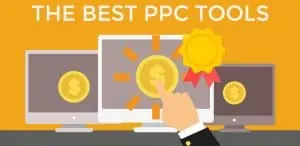Amazon repricing is one of those rabbit holes that the moment you venture down it you realize a whole world revealed before your eyes. For the uninitiated, repricers are software products that allow you to automate your amazon pricing. There are a number of them available today boasting a range of different features. Choosing the right repricer and using it strategically to meet your specific product goals is often an overlooked piece of the amazon puzzle. Businesses running in the amazon ecosystem must master repricing and tailor a strategy that works for them. In this article we explore repricing and how different business types can build a tailored repricing strategy.
Key Points in the Article
- Amazon is designed to encourage competition on its platform. The buy box allows multiple sellers to sell the same item
- Repricers allow you to automate your pricing changes to better compete with other sellers in the buy box.
- Some repricers use AI to price according to your goals. For example, AI can monitor competitors of time and determine the best price to win the buy box.
- Other repricers allow you to set up conditional rules and run different AI’s or manual bidding rules at different times based on your unique business needs. We include an example strategy
- Repricing is also important for private label sellers
- Repricing should be used in conjunction with an ad spend strategy for best outcomes.
Understanding the ‘Featured Offer’ (Buy Box)
It’s surprising how many people that shop on Amazon still do not realize there is something called the ‘featured Offer’, (formerly known and still widely referred to as the ‘buy box’). The buy box is a prominent feature on an Amazon listing and different sellers can rotate into the buy box based on a range of factors. The image below shows you the buy box on the right hand side and other sellers below it.
For any given Amazon listing there can be multiple sellers. Amazon uses a number of factors to determine which seller will be featured in the buy box. These include: inventory levels, shipping time, seller rating and many more. A comprehensive list can be found on the Amazon blog. Assuming you tick most of the boxes and you are an FBA seller with fast shipping and a decent rating, the main factor that will determine the buy box for you is pricing. All things being equal, ensuring that you are priced competitively against others on the listing is going to be the main determiner of whether you hold the buy box or not. Staying on top of your pricing is critical!
How Repricers Work
Repricers are software tools that allow you to dynamically adjust your pricing based on a set of formulas or conditions. Repricers are able to take many input factors into account such as sales velocity, stock levels, number of competitors and many more. Yet the main factor in most cases will be competitor pricing. Repricers react to these inputs and make decisions on how to adjust pricing automatically.
Some repricers allow you to create your own custom rules as to how they should perform. These are called ‘rule based repricers’. These are set rules to determine changes in price. Examples of fixed rules could be: target the minimum price, or target the buy box price. This might work in specific cases, but in general will not give a good outcome over a long period.
Other repricers use AI technology that is able to incorporate many different signals and also learn through trial and error. AI repricers are mostly trying to predict the behavior of competitors and adjust your own prices in order to achieve more time in the buy box. Most repricers also allow you to set up minimum and maximum prices to control the range of prices within which the repricer can operate.
Repricing Strategies for Arbitrageurs
As with most business decisions there is no one size fits all solution for repricing, because every business has a unique nature and set of goals. One business might be in a growth stage looking to maximize sales volume while another is focused on protecting profit margins. Different products also have different requirements. For perishable goods a key requirement is to sell within a certain time frame or risk expiring, while non-perishable goods have a longer sales period.
We’ve already discussed above how rule based and AI repricing works. These are fairly straightforward processes to set up for your amazon store. Using an AI repricing strategy is probably the easiest option and will get most of the work done for you. Many tools allow you to tweak their AI rules and also set up multiple different AI options. For example you might have an AI that has a goal to maximize sales. In this case the AI will try to get the buy box but also undercut the buy box at regular intervals. On the flip side you might have an AI strategy with a goal to maximize profit. Informed.co has an AI solution that maximizes time spent in the buy box with scope to bump up your price when it detects decreases in competition.
Price looping
Another great option is price looping with AI. This uses an AI strategy to maximize time in the buy box, but on a regular basis (e.g. every 3 hours) it can be set to increase the price by 20c and hold the price there for 20 minutes. If the competition follows, the price is maintained. If the competition does not follow, then the price reverts back down to the buy box.
Conditional repricing with AI
Conditional repricing takes the best of all worlds and combines them. It allows you to switch between different AI strategies based on your own set of business goals and automate the whole process. We discussed above how different AI strategies can focus on different outcomes. Conditional repricing allows me to utilize different AI strategies at different times using conditional rules.
Below is an example of a conditional repricing strategy that I use: It starts reading from the top down and as soon as the criteria hits, then it will execute.
IF Sales = 0 (in last 7 days)
IF Inventory age < 30 days old
Decrease price by 20%
Minimum price set at 5% margin
IF Inventory age > 30 days,
Decrease price by 20%
Min price set at 0%
IF inventory age > 60 days,
Decrease price by 20%
Min price set at $1 about payout threshold (referral fee + fba fee)
IF Sales is 7 to 10, (in last 7 days, ie 1 per day)
Decrease price by 10%
Minimum margin set at 15%
IF Sales > 28 (in last 7 days, ie 4 per day)
Increase price by 10%This is written in code. To explain it in English, it works like this:
IF: the inventory age is under 30 days AND IF there have been less than 3 sales in the last week,
THEN:
- we set the minimum price to achieve a gross profit margin of 5% and
- we implement the repricing strategy of AI sales booster…
Otherwise: we move onto the next criteria
IF: Inventory age is under 30 days AND IF there are less than 8 sales in the last 7 days.
THEN:
- We set the minimum price to a 15% gross profit margin and
- We use a different AI strategy.
Otherwise: we move onto the next criteria
And so on….
We keep moving onto the next criteria until one is met and we execute it.
If none of these criteria are met, THEN we know the product is a good seller so we set the minimum price to an equivalent gross profit margin of 25% and we use the most aggressive repricing strategy which aims to maximize profit and also loops the price up every 3 hours to see if competitors will follow.
As a practical example. If your store has a product which now has inventory sitting around for more than 40 days. If it also has achieved less than 8 sales in the last 7 days. These 2 criteria will be triggered and the minimum price will be calculated and set to a 10% gross profit margin and the repricer strategy will be set to: AI Equalizer (an AI strategy that balances between trying to get more sales and also defending the margin somewhat).
This strategy, that I built is designed to:
- Be more aggressive with older stock. We set lower prices based on lower margins the longer the stock has been sitting around. And we set more aggressive sales boosting AI strategies. This minimizes product expiry and amazon overstock fees.
- Pick up on products with slower sales and decrease prices to spur sales
- Liquidate (set 0 or negative margins) for product that is older than 60 days
- Ensure that products with strong sales sell for the maximum price we can.
Conditional repricing can be very powerful and it needs to be customized for each business. In my example, inventory is very important and a central signal we use to determine price. Another business might have less regard for inventory age and rather be more concerned about inventory quantity. A rule could be set to increase the minimum sale price when inventory drops below 50 units.
Private Label vs Arbitrageurs
So far we have been discussing cases where there are multiple sellers on a single listing. These sellers are known as arbitrageurs or resellers. But if you are selling your own product then you are in a different category, often referred to as ‘private label’. In this case you will always own the buy box since there are no other sellers of your product. While you might think in this case you don’t need a repricer, the truth is that you can likely still benefit from one.
Repricing is still important for private label sellers for 2 reasons. Firstly, even though there is no direct competition on your listing, there is still usually competition coming from other listings. Some repricers allow you to reprice your listing against other listings. You do this by entering your competitor listings details and the repricer is able to monitor their listings and make adjustments. This kind of repricing could be simple rule based or AI based as well. It’s usually less complicated and competitive than competing for the buy box.
A second reason to use a repricer for private label listings is that you can reprice using competitor independent metrics. Some repricers allow you to adjust price based on sale velocity. As your product starts to sell more you could increase price incrementally thereby maximizing the amount of profit you can receive. As your product sales drop the repricer can drop price to ensure you maintain a healthy sell through rate. The same can be done with the stock levels metric, repricers can be set to automatically adjust as stock outs come closer.
Repricing vs Ads
Pricing is one of the strongest levers we can pull when it comes to promoting and advertising our products. Amazon advertising spend is another important level we have at our disposal. This is largely because of the nature of Amazon’s closed loop marketplace. Both Ad spend and price will have similar dramatic effects on profit margin. Is it better to create a repricing strategy that discounts prices or run an ad campaign?
The dilemma that advertisers face: If you run ads you are able to send customers directly to your listing version, bypassing other sellers in the buy box. However, if your price is high, your conversion rates will be low and much of that ad spend will be wasted. On the other hand if you are priced competitively but have no ad spend, you may have high conversion rates, but not enough traffic coming to your listing.
Ultimately the answer is that both are important, but should be implemented strategically at different times in the product life cycle. It’s critical in the early days of a product launch to have strong ad investment to boost rankings and also a competitive price. As keyword rankings improve ad spend can be paired back. There is also scope for a certain level of ‘always on’ advertising and increased advertising during sales periods. But the focus should be on achieving a stable gross profit margin in the long term.
In summary, repricers are an essential piece in the Amazon Sellers toolkit. Whether you are a reseller or a private label seller, having a repricing strategy will significantly improve your sales and profit margin. Repricers are not a one size fits all solution, I have outlined suggested implementations for different businesses based on key business goals like sales volumes and inventory age.



